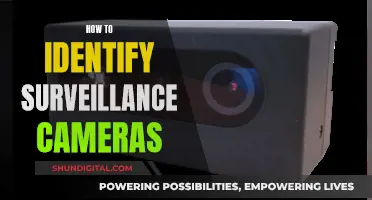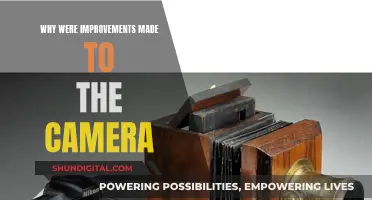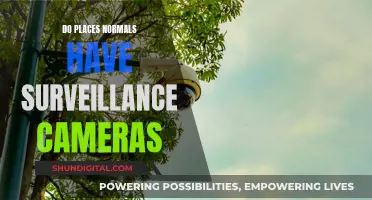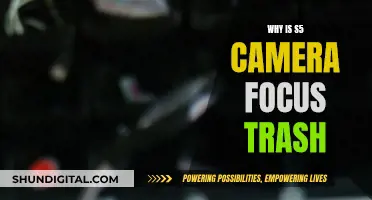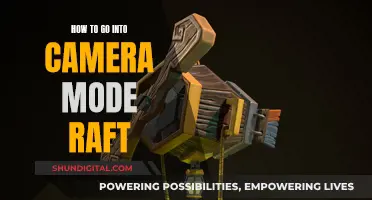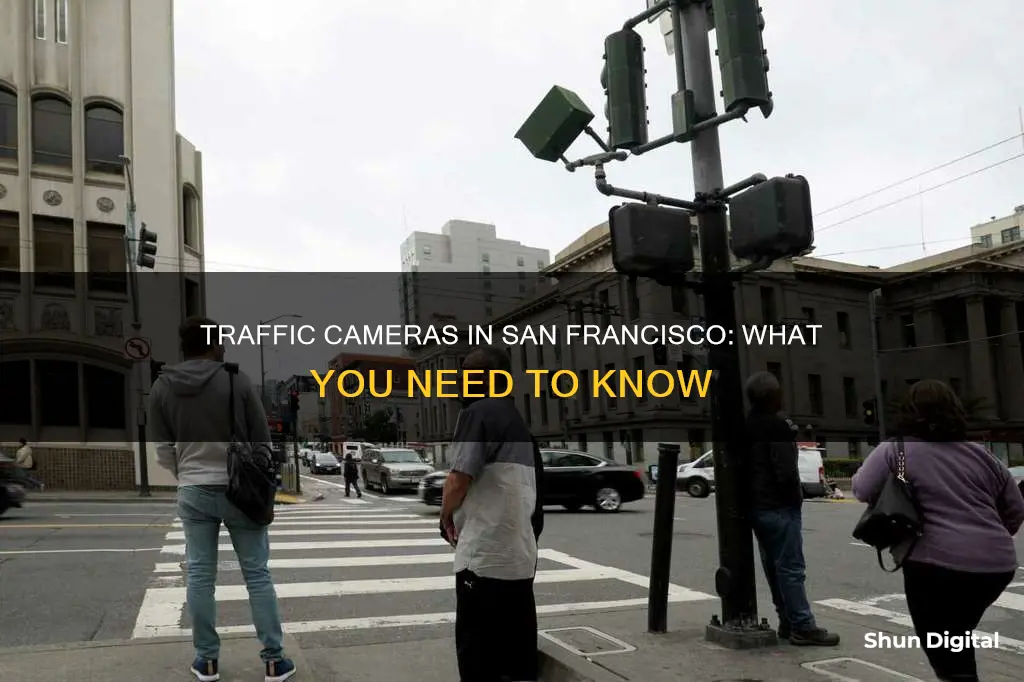
San Francisco has a network of traffic cameras in place to monitor and enforce traffic laws. These include red-light cameras, speed cameras, toll road cameras, and automatic license plate readers. The city's Municipal Transportation Agency (SFMTA) has implemented an Automated Enforcement Program that uses cameras to deter illegal red-light running and illegal right turns, with a focus on intersections with high collision rates. Additionally, the SFMTA has approved the installation of 33 speed camera systems to address excessive speeding, primarily on streets with high crash rates, known as the High Injury Network. These safety measures aim to reduce traffic collisions and improve overall road safety in San Francisco.
| Characteristics | Values |
|---|---|
| Purpose of traffic cameras | To enforce illegal red-light running, illegal right turns, and speeding |
| Camera Locations | 13 intersections and 33 locations with speed safety camera systems |
| Intersection Examples | 6th St at Bryant St, 19th Ave at Sloat Blvd, Fell St at Masonic Ave, Market St at Octavia Blvd |
| Speed Camera Locations | 3rd St from Key Ave to Jamestown Ave, 7th St from Harrison to Folsom, 9th St from Bryant to Harrison, Fulton from Arguello to 2nd Ave |
| Camera Mechanics | Two or more high-speed digital cameras paired with illuminating strobes and an HD video camera |
| --- | --- |
| Camera Functionality | Captures three digital photographs and a short video clip of the violating vehicle |
| --- | --- |
| Notification of Violation | Mailed to the registered owner of the speeding vehicle within two weeks of the violation |
What You'll Learn

San Francisco's red light and speed cameras
San Francisco has a problem with speeding and red-light violations, which often lead to severe and fatal crashes. To address this, the city has implemented an Automated Enforcement Program that uses a network of automated cameras to enforce illegal red-light running and illegal right turns. This program is a combined effort of the San Francisco Municipal Transportation Agency (SFMTA), the San Francisco Police Department, the Superior Court of San Francisco, and the San Francisco City Attorney's Office.
The SFMTA's Automated Enforcement Program has resulted in a 66% citywide drop in injury collisions resulting from red-light running between 1997 and 2022. Decisions on the placement of red-light cameras are based on public safety, with priority given to intersections with the highest collision totals. Currently, there are 13 intersections in San Francisco with automated enforcement cameras, including South Van Ness Avenue at 14th Street, 6th Street at Bryant Street, and Fell Street at Masonic Avenue.
In addition to the red-light cameras, San Francisco is also in the process of implementing speed cameras, thanks to Assembly Bill 645, which was signed into law in 2023. This bill allows the city to pilot a speed camera program for five years, starting in 2024. The SFMTA has approved 33 locations for these cameras, which will primarily be placed on the High Injury Network, the 12% of streets that account for more than 68% of traffic-related severe injuries or fatalities. These streets include 3rd Street from Key Avenue to Jamestown Avenue, 7th Street from Harrison to Folsom, and 9th Street from Bryant to Harrison. The cameras will be geographically dispersed among all 11 districts, with each district receiving two to four cameras.
The speed camera pilot program will begin with a public education campaign and the issuance of warning notices for the first 60 days after the cameras are operational. Fines will range from $50 to $500, depending on the speed over the limit. The cameras are expected to be installed throughout 2024, with full implementation anticipated by early 2025.
Updating Lightroom: Fix Camera Raw with Simple Steps
You may want to see also

Where are the traffic cameras located?
The San Francisco Municipal Transportation Agency (SFMTA) has approved 33 locations for speed cameras, which will primarily be placed on the "High Injury Network" streets with the highest crash rates, in school zones, or areas with documented speed racing issues. The 33 speed camera systems will be geographically dispersed among all 11 districts, with each district receiving between two and four cameras. Here is a list of the proposed speed camera locations by district:
District 1 (3 cameras)
- Fulton near Arguello
- Fulton near 42nd
- Geary near 7th
District 2 (2 cameras)
- Bay near Octavia
- Franklin near Union
District 3 (3 cameras)
- Columbus near Lombard
- Broadway near Powell
- Embarcadero near Green
District 4 (2 cameras)
- Lincoln near 27th
- Sloat near 41st
District 5 (2 cameras)
- Geary near Webster
- Turk near Van Ness
District 6 (7 cameras)
- Mission near 8th
- 7th Street near Harrison
- 10th near Harrison
- 9th near Bryant
- Harrison near 4th
- Bryant near 2nd
- King near 4th
District 7 (2 cameras)
- Ocean near Frida Kahlo
- Monterey near Edna
District 8 (2.5 cameras)
- Market near Danvers
- San Jose near 29th
- Guerrero near 19th (on the district line with District 9)
District 9 (2.5 cameras)
- Guerrero near 19th (on the district line with District 8)
- 16th near Bryant
- Cesar Chavez near Folsom
District 10 (3 cameras)
- Cesar Chavez near Indiana
- 3rd Street near Key
- Bayshore near 101
District 11 (4 cameras)
- Geneva near Prague
- San Jose near Santa Ynez
- Mission near Ottawa
- Alemany near Farragut
In addition to the speed cameras, the SFMTA's Automated Enforcement Program uses a network of automated cameras to enforce illegal red-light running and illegal right turns. There are currently 13 intersections with automated enforcement cameras:
- 6th St at Bryant St (eastbound, southbound)
- 19th Ave at Sloat Blvd (northbound, southbound)
- Fell St at Masonic Ave (westbound)
- Hayes St at Polk St (southbound, westbound)
- Market St at Octavia Blvd (eastbound illegal right turns)
- Oak St at Octavia Blvd (eastbound, northbound, eastbound right-turn lanes)
- Park Presidio Blvd at Lake St (southbound)
- So. Van Ness Ave at 14th St (northbound)
- 4th St at Harrison St (southbound, westbound)
- 6th St at Folsom St (southbound)
- 8th St at Folsom St (southbound)
- Divisadero St at Bush St (northbound)
- Van Ness Ave at Broadway (southbound left-turn lanes)
Mastering Manual Focus on Your Mirrorless Camera
You may want to see also

How do traffic cameras work?
San Francisco has a range of traffic cameras in operation, including red-light cameras, speed cameras, and cameras to enforce Transit Only lanes.
Traffic cameras are typically located on top of the traffic light, and they monitor traffic flow only. They do not issue tickets. Red-light cameras, on the other hand, are located at the side or corner of an intersection. They are designed to capture evidence of vehicles running red lights or making illegal turns.
Traffic cameras are an essential tool for monitoring and managing road safety. They are usually automated systems that work in conjunction with traffic signals and radar technology to detect and capture violations. Here's a detailed look at how they work:
- Automated Enforcement: Traffic cameras are often part of an automated enforcement program, such as San Francisco's SFMTA Automated Enforcement Program. These programs use a network of cameras to enforce traffic laws, such as red-light running and illegal turns.
- Camera Control Unit: The camera control unit is the brain of the system. It manages and synchronizes all the components of the automated enforcement system.
- High-Speed Digital Cameras: Traffic camera systems utilize high-speed digital cameras, often paired with illuminating strobes and HD video cameras. These cameras capture clear photos and videos of vehicles, regardless of weather conditions.
- 3D Traffic Radar: The camera control unit is connected to a 3D traffic radar that tracks the position, speed, and direction of vehicles passing through its field of view. This radar technology ensures that only violators are captured by the system.
- Traffic Signal Monitoring: The camera control unit is also connected to the traffic signal, monitoring the color of each signal light phase as they change. This ensures that the system only captures violations when the signal is red.
- Secure Housing: To prevent tampering, the entire traffic camera system is secured within a locked metal housing. This helps to ensure the integrity of the equipment and the data it collects.
- Violation Detection: The system is designed to detect violations by capturing images and videos of vehicles that enter an intersection after the traffic signal has turned red. This typically triggers the capture of multiple photos and a short video clip of the violation.
- Data Collection: Traffic cameras collect and record critical data, including the time, date, and duration of traffic signals. This data is used as evidence to support any citations or penalties issued.
- Image and Video Evidence: Traffic cameras capture multiple images of the violating vehicle, including close-up photos of the license plate and the driver. This visual evidence is used to identify the vehicle owner and ensure accurate enforcement.
- Citation and Notification: Once a violation is confirmed, a citation or ticket is issued to the registered owner of the vehicle. This process may vary depending on local laws, but typically involves mailing the citation and providing a warning period before imposing fines.
- Review and Adjudication: In some cases, there may be a review process where drivers can dispute the citation. This often involves reviewing the captured photo and video evidence to confirm the violation.
- Maintenance and Calibration: Trained technicians regularly maintain and calibrate traffic camera systems to ensure their accuracy and proper functioning. This includes remote monitoring, periodic inspections, and testing of the equipment.
Traffic cameras play a crucial role in enforcing traffic laws, reducing collisions, and improving road safety. By utilizing advanced technology, these systems can capture clear evidence of violations, identify offenders, and help hold them accountable. The detailed workings of traffic cameras vary depending on the specific system and location, but they all share the common goal of making our roads safer for everyone.
Focusing Your Luma Camera: The Ultimate Guide
You may want to see also

The SFMTA's Automated Enforcement Program
The SFMTAs Automated Enforcement Program is a combined effort of the SFMTA, the San Francisco Police Department, the Superior Court of San Francisco, and the San Francisco City Attorney's Office. The program uses a network of automated cameras to enforce illegal red-light running and illegal right turns. The SFMTA also uses forward-facing cameras on buses to enforce Transit Only lanes under the Transit Only Lane Enforcement (TOLE) Program.
The SFMTA's automated enforcement, engineering, and education efforts have resulted in a 66% citywide drop in injury collisions resulting from red-light running between 1997 and 2022. Decisions regarding the placement of red light cameras are based on public safety, with priority given to intersections with the highest collision totals. The SFMTA implements other traffic safety measures before considering an automated enforcement installation at an intersection.
In 2019, the SFMTA upgraded the Automated Enforcement System with state-of-the-art equipment. The cameras enforce 19 approaches at 13 intersections, capturing clear photos and videos of violations. The system only enters enforcement mode when the traffic signal light changes from yellow to red, and it is designed to catch only those who enter the intersection after the light has turned red.
Citations are issued to the vehicle's registered owner within 15 days of the violation, and a courtesy warning is sent within 30 days. Trained technicians perform daily remote monitoring of the system and conduct weekly and monthly inspections to ensure proper functionality.
In addition to the Automated Enforcement Program, the SFMTA is also implementing speed safety cameras to address excessive speeding and reduce severe and fatal injury traffic collisions. Unsafe speed is a common factor in crashes resulting in injuries, and speed safety cameras have been proven effective in other cities. San Francisco is authorized to install 33 speed safety camera systems, which will be placed on high-injury streets, in school zones, or on streets with a history of sideshows. The cameras will be dispersed across all 11 districts, with a focus on streets with the highest crash rates.
Eufy Camera Battery Life: How Long Do They Last?
You may want to see also

The impact of traffic cameras on safety
San Francisco has a network of traffic cameras in place to enforce road safety. The SFMTA's Automated Enforcement Program uses automated cameras to enforce illegal red-light running and illegal right turns. In addition, the SFMTA uses forward-facing cameras on buses to monitor Transit-Only lanes.
One of the key benefits of traffic cameras is their ability to deter and reduce speeding. Speeding is a significant factor in many traffic collisions, and it is argued that by reducing vehicle speed, traffic cameras can decrease the kinetic energy transferred during a collision, thereby reducing the severity of injuries. In support of this, a study in Virginia found that red-light cameras reduced the number of drivers running red lights by 67%. Additionally, with the recent passage of AB 645, San Francisco can now utilise speed safety cameras to address excessive speeding and reduce severe and fatal injury traffic collisions.
However, the overall impact of traffic cameras on safety is less clear. Some studies have found that while traffic cameras can reduce certain types of accidents, they may also increase the number of rear-end collisions as drivers suddenly stop to avoid fines. A study in Houston, Texas, for example, found that when red-light cameras were removed, angle accidents (T-bone accidents) increased by 26%, but all other types of accidents decreased by 18%. This suggests that while camera programs can reduce certain types of accidents, they may also contribute to an increase in other types of collisions.
Furthermore, the effectiveness of traffic cameras may depend on various factors, such as the specific location and context. Proper site selection is crucial, and cameras should be installed in areas with a history of crashes, injuries, or fatalities. Community engagement and transparency are also essential to build and sustain public trust in these programs.
In conclusion, while traffic cameras can be a useful tool to deter and reduce certain dangerous driving behaviours, their overall impact on safety is complex and multifaceted. Further studies and careful consideration of implementation strategies are necessary to maximise the benefits of traffic camera programs on road safety.
How Diopter Adjustment Affects Camera Autofocus Performance
You may want to see also
Frequently asked questions
Yes, there are traffic cameras in San Francisco. These cameras monitor traffic flow and do not issue tickets.
Yes, the SFMTA's Automated Enforcement Program uses a network of automated cameras to enforce illegal red-light running and illegal right turns.
Red light cameras are located on the side or the corner of the intersection. Some key locations include South Van Ness Avenue at 14th Street, 4th Street at Howard Street, and 5th Street at Folsom Street.
Yes, San Francisco is currently implementing speed cameras. Assembly Bill 645, signed into law in 2023, allows San Francisco and five other California cities to pilot speed camera programs for five years, starting in 2024.


